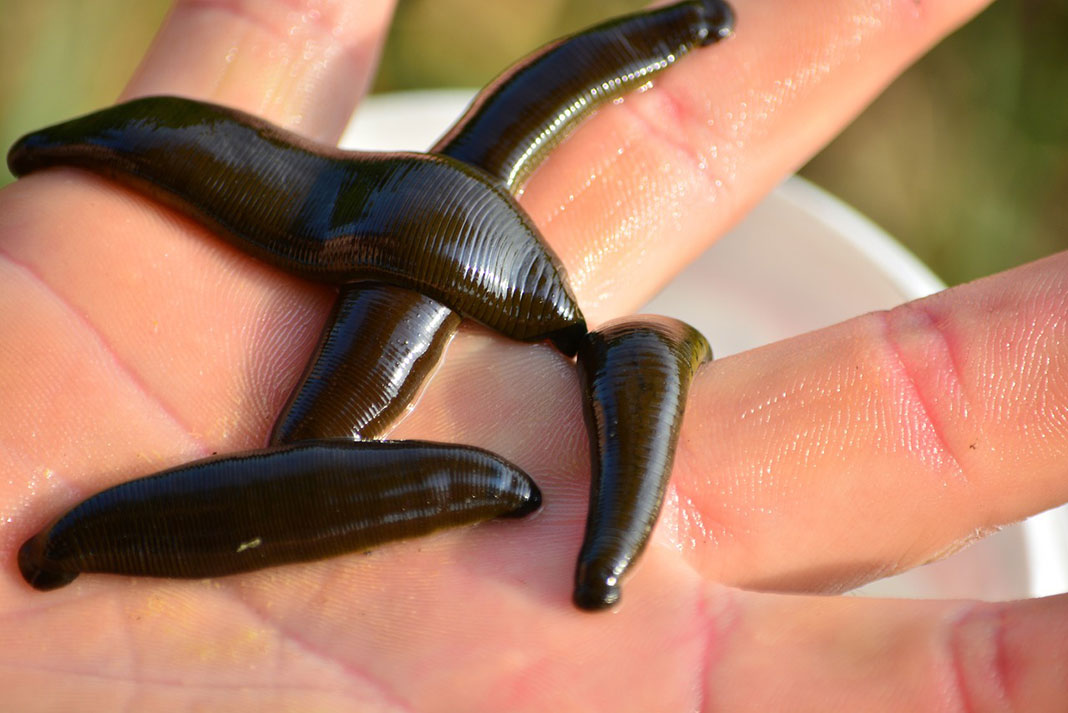Sight fishing is an exciting way to target big trout in shallow water. As the fish belly crawl on muddy banks and structure, they are searching for an easy meal. Nothing is more appetizing to a trout than a fat, juicy leech slowly swimming just below the surface. And the balanced leech fly can give you an irresistible imitation.
Target Ice-Out Trout with the Balanced Leech Fly
The best time to search for still water trout is during spring ice-out, a short period of time when the lake water is slowly thawing. The window may only last a couple of weeks between March and May until the lake water turns over, mixing deeper cold water with warmer surface water.
During ice-out, the shoreline is the first part of the lake to thaw. In addition to being warmer, recently opened water has a slightly higher oxygen content. This combination attracts large trout. The fish cruise the shallows looking to ambush prey.
After a long winter conserving energy, the trout are hungry. These trout haven’t seen a hook in months. I often spot the fish swimming with their back out of the water as they search the mucky bottom for a meal.

Behold the Balanced Leech
In the northern lakes, fly anglers use a balanced leech pattern to entice shallow-water trout. Imitating a leech, baitfish or baby crayfish, the bushy body, long tail, weighted fly is a staple pattern for still water trout.
Developed by Jerry McBride of Spokane, Washington, the balanced leech is similar to a wooly bugger fly pattern but with a few key differences.
First, the weight is attached to the top of the hook shank with a satin pin and tungsten bead. The weight placement causes the fly to swim with a horizontal, balanced profile imitating the way a leech swims. Swimming horizontally with the hook pointing upright, the pattern minimizes snagging as the lure hovers over the lake bottom.
The balanced leech can imitate a leech, baitfish or small crayfish. To match the local forage, carry a variety of colors; my favorites are black, white, blood red, crayfish orange and olive. Hook sizes range from two to 12.
Leech Technique
To target the shallows, use a floating or intermediate fly line paired with a nine- to 12-foot leader tapered to 2x.
A 10-foot-long, 6-weight fly rod is perfect for all-around still water fishing. To match water and weather conditions, use a cassette fly reel and carry several spools rigged with different line configurations.
A big trout will often engulf the fly as soon as the lure hits the water. To minimize slack line, and improve hook-up, land the fly with line lying straight on the surface. Let the fly sit for a second and then give a quick, short retrieve.
If the fly isn’t attacked immediately, proceed to strip the lure and vary the retrieve speed and lengthen the pauses. Start with a couple of small twitches followed by a slow and long pull and then pause before twitching again.
Even though I’m fishing in shallow water, I add a slip-style indicator 12 to 24 inches above the fly. The indicator allows me to hang the fly longer in between strips without the lure sinking to the bottom. Trout often nab the fly as it hovers motionless.

Ideal Fishing Conditions
To give the water time to warm up, I prefer to fish on a calm evening. As the sun drops below the trees, and long shadows stretch across the water, the largest trout push into the shallows.
Light winds allow me to slowly cruise along the shore watching for action on the surface. I keep my eyes peeled for weeds, cover, logs, tree limbs and rocks. Sometimes I spot a slight ripple and other times I see the trout’s back sticking out of the water.
If I don’t see trout on the surface, I’ll blind cast the balanced leech into the structure. For the best results, look for a shallow cove near deeper water.
Suckers for a sucker. | Feature photo: Marc Fryt










Those are such pretty fish.